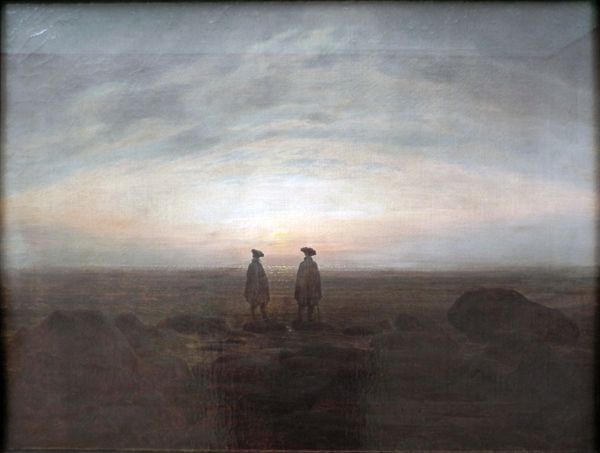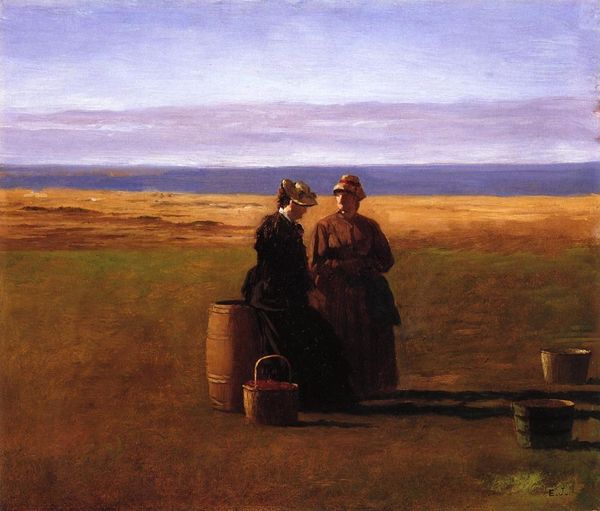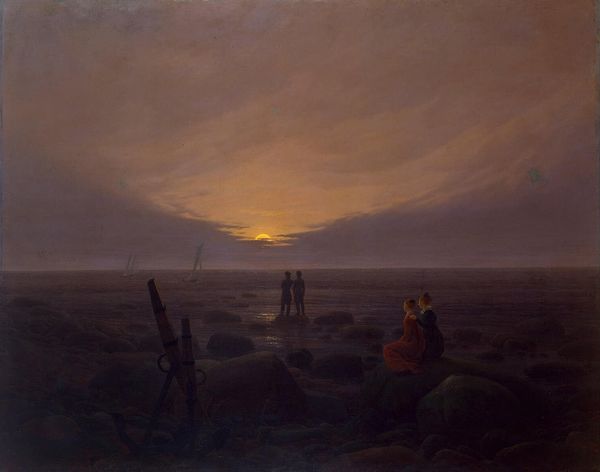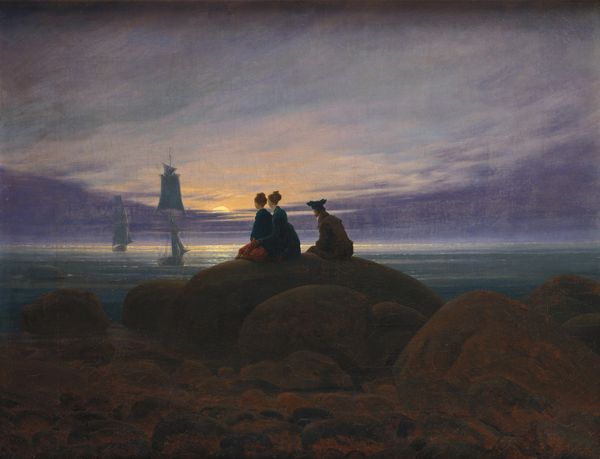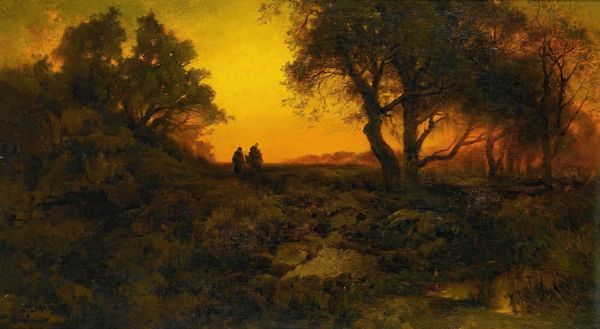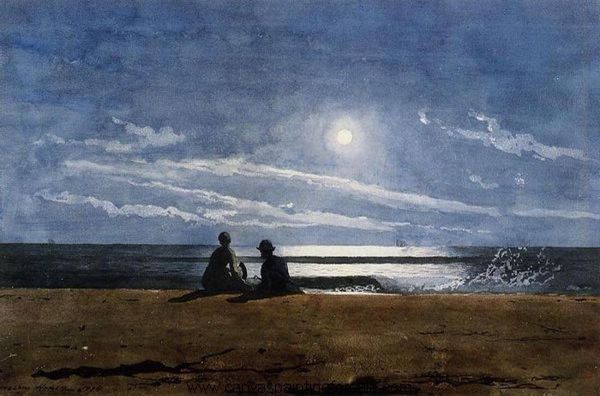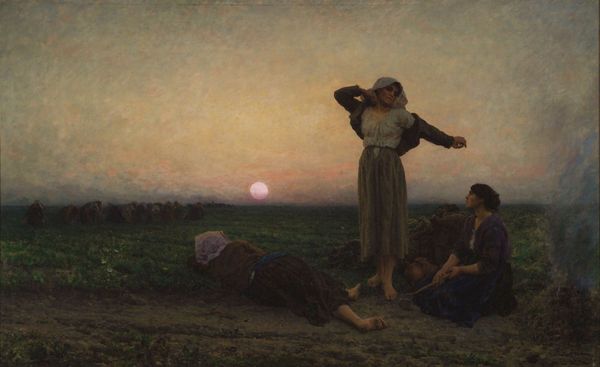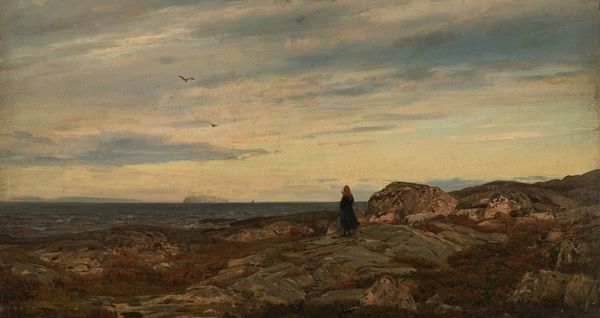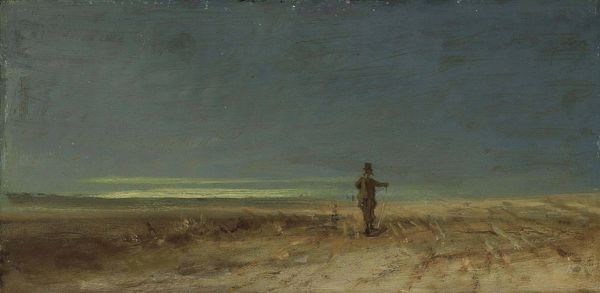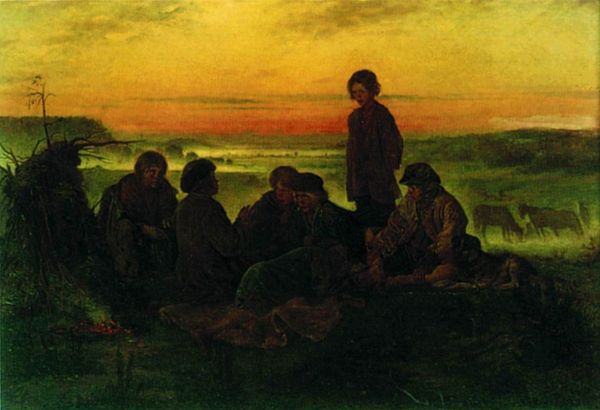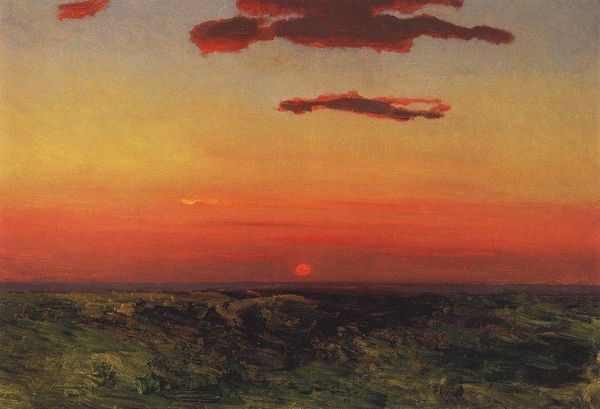
plein-air, oil-paint
#
plein-air
#
oil-paint
#
landscape
#
figuration
#
romanticism
#
nature
Copyright: Public domain
Editor: This is Caspar David Friedrich’s “Evening Landscape with Two Men," painted in 1835 using oil on canvas. The silhouettes of the figures are really striking against the sunset. How do you interpret this work, especially in relation to its historical context? Curator: Friedrich's Romantic landscapes often placed figures within nature to explore the relationship between humanity and the environment, reflecting the sociopolitical anxieties of the time. What do you notice about the figures themselves? Their dress, their posture? Editor: They're wearing these dark, almost uniform-like clothes, and they’re both facing away from us, towards the landscape. They seem small and insignificant against the vastness of nature. Curator: Exactly. Consider how Friedrich’s paintings coincided with the rise of nationalism and the suppression of individual freedoms in Europe. These figures, dwarfed by nature, can be seen as metaphors for the individual’s struggle against oppressive societal structures. Their backs turned could be interpreted as a form of quiet resistance, a turning away from the constraints of society towards the solace and freedom of the natural world. What do you think about the sunset? Editor: The sunset…it’s beautiful, but it also feels melancholic. Maybe it symbolizes the end of an era, or a yearning for something beyond what's visible. Curator: Yes! And perhaps also the ephemerality of political regimes. The golden light, while beautiful, is fleeting, suggesting that even the most powerful structures are temporary. Do you think Friedrich might have used landscape to invite discussion about humanity's place within power structures? Editor: I hadn't thought about it that way before, but it makes a lot of sense. It's a painting that invites you to reflect not just on nature, but on society and your role in it. Curator: Absolutely. And by linking aesthetics to politics, it becomes a potent reminder of art’s capacity to instigate meaningful dialogues about identity, purpose and justice.
Comments
No comments
Be the first to comment and join the conversation on the ultimate creative platform.
